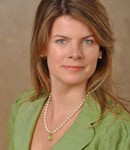
Ms. Talia Gibas
The Many Themes of STEAM
Posted by Dec 18, 2013

Ms. Talia Gibas
Back in May, I shared my reservations about efforts to “turn STEM to STEAM.” I didn’t question “whether the arts and sciences are connected. What was missing for me was an articulation of how they are connected. Sure, there are elements of geometry in visual art, and yes, you need to understand basic math in order to read music or follow rhythms in dance. But arranging letters on a page is one thing; bringing disciplines together in a thoughtful and authentic way is something entirely different.”
Since then, I’ve had the privilege of spending several days with other members of the Arts and STEM Collaborative for 21st Century Learning, a cohort of arts and science education leaders from across Los Angeles, Orange, and San Diego Counties. We’ve met three times since the summer, and despite our thoughtful conversations, I had a nagging question: is STEM-to-STEAM simply about the integration of the arts and STEM subjects? If so, can we take an existing definition of arts integration (I’m a fan of the one developed by The Kennedy Center), declare the S, T, E, and/or M the “other subject area,” and call it a day? If not, why not? How is STEAM different?
Read More









 Jeff Poulin
Jeff Poulin




